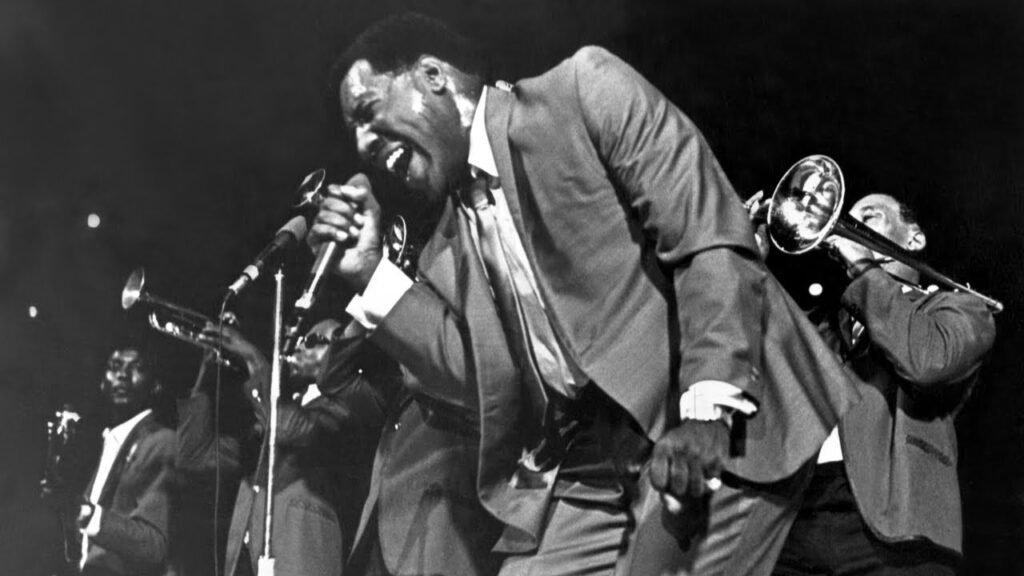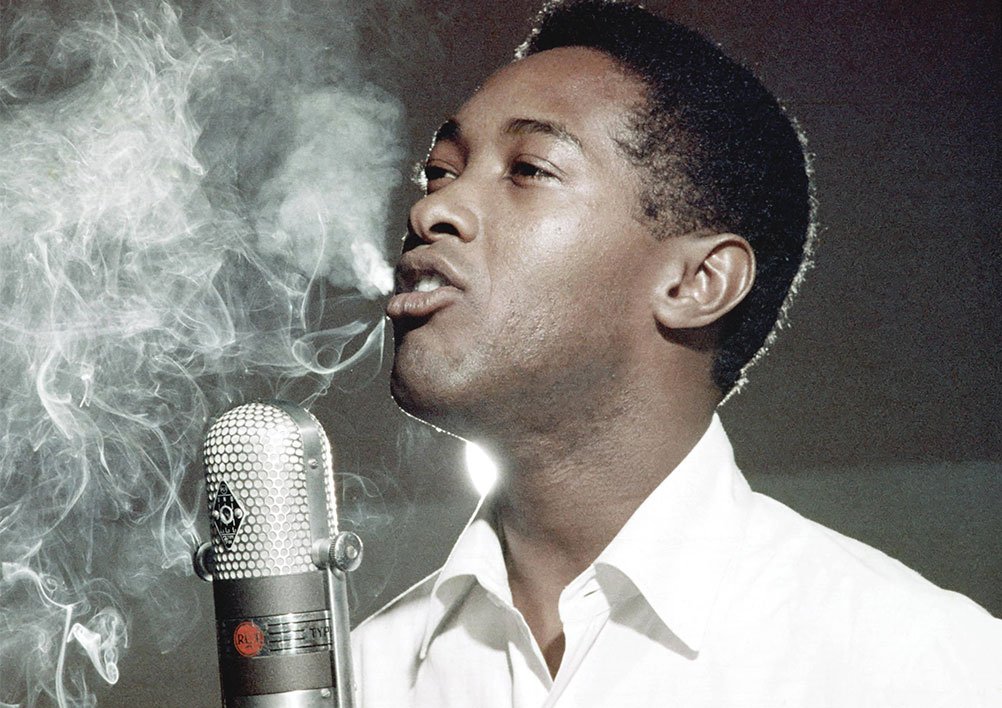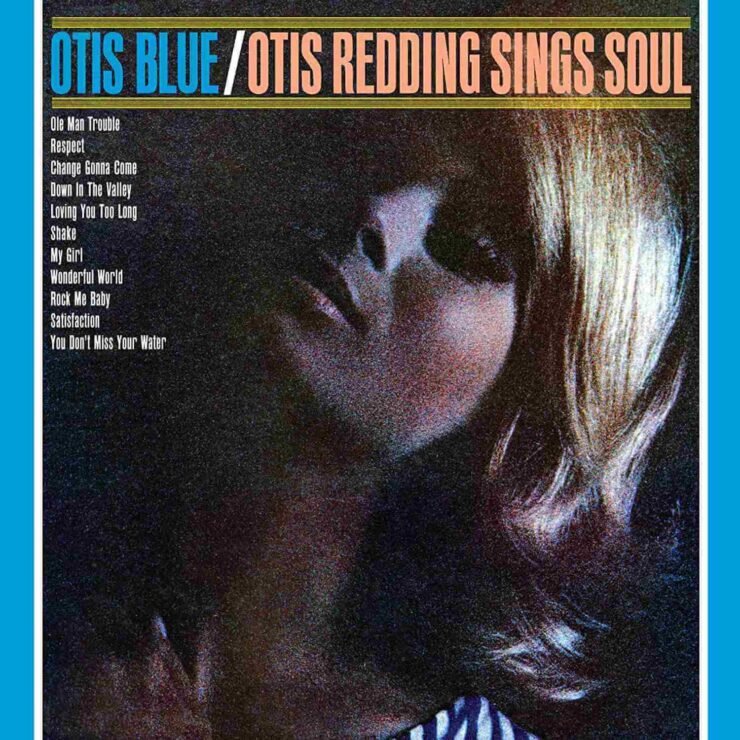Sixty years ago — in July 1965, under the sweltering Memphis heat — Otis Redding walked into Stax Studios and, in just twenty-four hours, recorded one of the defining albums of soul music. Otis Blue wasn’t simply made — it was unleashed. Every shout, every breath, every note sounds torn from the depths of his being. It’s the sound of a man consumed by his music: a voice not just sung, but lived through — inhabited, raw, and utterly alive.
From Georgia to Memphis
Otis Redding’s journey into music was forged as much by necessity as by passion. At 15, he left school to support his family after his father contracted tuberculosis. He played small gigs whenever he could. His big break came in 1958 when he won a local talent show with Johnny Jenkins backing him on guitar. Word spread quickly, and soon Redding was landing steady work, including a stint with Little Richards.
Fate intervened in 1962, when Redding drove Jenkins to an audition at Stax Records in Memphis. As the session wound down, he was offered the chance to sing two songs. Stax president Jim Stewart later recalled: “Everybody was fixin’ to go home, but Joe Galkin insisted we give Otis a listen. There was something different about that ballad. He really poured his soul into it.” That ballad was “These Arms of Mine.” Released as a single, it became Redding’s first hit, leading to a record deal with Stax. His first two albums performed modestly, charting on the R&B listings but struggling to break into the pop charts.

A Soul Storm in 24 Hours
But on July 9 1965, things were about to change when Otis Redding made it into the Stax recording studios at 10am. He was joined by Stax house band Booker T. & the M.G.’s —a horn section featuring members of the Mar-Keys and the Memphis Horns— and pianist/future legend Isaac Hayes. The mood is intense, the chemistry electrifying. Booker T Jones remembers: “It was intense, but he [Redding] seemed to be possessed at that time”. On July 10, at 2pm, the album was in the can. In only 24 hours they set up to record 11 tracks that would define the sound of soul for decades. They only took a break to allow the band members to play gigs in local venues.
The album features three original songs alongside eight covers, yet it never feels like a patchwork. Instead, Redding’s voice—urgent, soulful, and completely inhabited—threads everything together. He doesn’t just sing; he seems to embody each lyric, as though living the emotions in real time.

The Originals
The opener, “Ole Man Trouble”, is a masterstroke. Written as a blues track but carried by Redding’s southern soul intensity. It personifies trouble as an old man figure, with whom he is unfortunately too acquainted. In his lament, he begs for faith to come and pick him up. His delivery is both weary and defiant, showing unbelievable depth from his 24 years.
“Respect” comes next. Another masterpiece which would live on with a legacy of its own. It took “a day to write, 20 minutes to arrange, and one take to record” according to Redding. He sings the plea of a working man demanding acknowledgment from his partner. The song is intense, fast paced, and already excellent. Ironically, it would become an even greater hit with Aretha Franklin. In her version she replies to his plea from the woman perspective with such power that it became a ultimate feminist anthem — and also her first #1 hit.
Perhaps the emotional high point is “I’ve Been Loving You Too Long”, co-written with Jerry Butler —from The Impressions. Originally released as a single earlier that year —then titled ‘‘I’ve Been Loving You Too Long (to stop now)“— it was re-recorded for the album with an extra verse and Isaac Hayes on piano. It is pure ache set to melody, a performance so raw that countless artists—The Rolling Stones, Aretha Franklin, Ike & Tina Turner—would cover it, though none quite captured the same vulnerability.

Tribute to Sam Cooke
Just months before the album’s recording, Redding’s friend Sam Cooke was shot dead in Los Angeles. Otis Blue became in part a tribute. He covered three of his song, and made them his own. Redding’s version of “A Change is Gonna Come” simply surpasses the wonderful original. From the first bars, Redding’s voice rises like an overwhelming wave of warmth and sorrow, and goosebumps start forming. He displays here the wide range of colourful emotions he is able to produce. Cooke’s anthem for the American Civil Right movement, already a masterpiece on its own right, is made sublime here by Otis Redding.
His versions of “Shake” and “Wonderful World” — my little favourite of the three for some reason I cannot explain— are simply outstanding. Redding’s voice, like on the rest of the album, feels possessed and the instrumentation by Booker T. & the M.G.’s gives a much funkier edge. Otis Redding honours his friend not by imitation, but by transformation… What better tribute?
Turning Others’ Words Into His Own
The rest of the album sees Redding raiding the contemporary songbook: the powerful “Down In The Valley” by Solomon Burke, the groovy “My Girl” by the Temptations, BB King’s bluesy “Rock Me Baby”, and the wonderful closing with “You Don’t Miss Your Water” by William Bell. Every time, Otis Redding, takes the song, and rebuilds it as his own… The real stand out here is the cover of The Rolling Stones “Satisfaction” only released just a month prior. The story goes that the Stones recorded their cover of “I’ve been Loving You Too Long” shortly after the release of the single, so Otis decided to return the favour and record his own version of “(I Can’t Get No) Satisfaction”.
But when he set up to record the song —which would become the 4th single for the album— Otis Redding didn’t have the proper lyrics at hand, and had only discovered it the same day. It took Steve Cropper to sit next to a record player and write down what he thought were the lyrics. In a case of mis-heard lyrics, we can hear Redding singing that he can’t get no « satis-fashion »… As a matter of fact, we can barely understand what Redding is singing… But the interest of his cover is how he made it his own, using horns section to play the riff, like Keith Richard had envisioned originally. The single became a real soul banger in no time.

When a Voice Becomes a Legend
With Otis Blue, Otis Redding delivered a record that would come to define not only his career but an entire era of soul music. The album is a perfect blend of southern soul and gospel fire, stitched together with blues and a touch of funk. His voice — deeply inhabited, lived-in, with raw emotion — remains the album’s beating heart. Yet what truly elevates it is the chemistry in the Stax house band: Isaac Hayes at the piano, Booker T. & the M.G.’s locked in a groove that feels both spontaneous and eternal. The creative energy of those twenty-four hours was nothing short of electric.
The album broke into the pop charts (#75 on Billboard, #6 in the UK) while topping the R&B listings. It was announcing Redding as a voice the wider world could no longer ignore. But tragedy struck just two years later, when he died in a plane crash at only 26, depriving the world of one of the greatest voice, and genius talent.
And yet, Otis never truly left. His voice — that colourful, heart-wrenching voice — inspired countless artists in his wake: Aretha Franklin, Al Green, Marvin Gaye, Rod Stewart, Janis Joplin, or Amy Winehouse and so many more. They all drew from that same well of emotion he dug so deep. Otis Blue stands as a monument — proof that when a singer truly inhabits a song, it never grows old. Sixty years on, his voice still sounds like the soul itself learning how to live, love, and lose — and somehow keep singing.




















